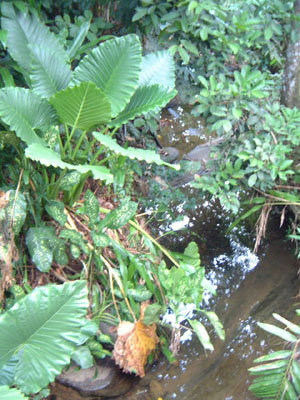
Beautiful Gal-oya national park is based around the Galoya reservoir in the eastern Sri Lanka. Together with scenic land trails, fabulous water trail along the reservoir brings a unique experience with several welcome surprises.
Location : Ampara & Monaragala districts – Eastern Province
Getting there:
* Colombo -> Kandy -> Bibila -> Inginiyagala
* Colombo -> Ratnapura - >Balangoda -> Wellavaya - > Monaragala - > Siyambalaanduwa - >17 handiya Ampara road (Wadinagala) - >Inginiyagala
* Colombo - > Ratnapura - >Pelmadulla->Thanamalwila->Wellawaya-> Monaragala - > Siyambalaanduwa - >17 handiya Ampara road (Wadinagala) - >Inginiyagala
Close by towns: Ampara, Inginiyagala, Bibila
Accommodation
Facilities: Galoya Park has a single tourist bungalow by the beautiful “Ekgal oya” river, which is near the 36th kilometer post in Ampara-Siyambalanduwa road.
Park has 4 camp sides also. They are “Kossapola”, ”Kaballabokka”, “Diggalamulla” and “Nilgala”
Park Management office is situated at Inginiyagala. The permissions to enter the park is also should be obtained from here.
There are two jeep trails to the park. But the most interesting trail would be the water trail. The safari boats start their journey from the jetty near the wild life information center situated on the main dam of the reservoir. Boats go up to the place where Galoya (river) meets the reservoir, which is about 18 miles away and takes one and half hours to reach.
The whole park and the reservoir are surrounded by a mountain range and famous hills like “Westminster abbey” and “Wadinagala” also makes the scenery picture perfect. Reservoir has several solitary islands like “Birds Island”. The rocky area where the Galoya meets the reservoir is called “Makara” (dragon mouth) which is famous among tourists.
Galoya Park is home to about 250 wild elephants. It is not rare to see elephants alone jeep trails and also during the boat ride. Alone the banks of the reservoir and in the islands, there are about 100-150 elephants in groups or in solitary. And if you are really lucky a surprise awaits you..! Rare site of swimming groups of elephants that cross the reservoir to the islands is truly amazing.
Other wild life of the park includes herbivores like Sri Lankan axis deer, Samba deer, Chevrotain, wild boar, wild buffalo, and carnivors like leopard and Sloth Bear. There are many small mammals also like Toque Macaque, langur, Giant Squirrel, Porcupine, Mongoose and Civet to name a few.
Next to the elephants, the other main attraction of the park would be birds. Galoya is truly a birds’ paradise. While the reservoir inhabits many aquatic birds, surrounding sav
 Image via Wikipedia
Image via Wikipedia
In and around the reservoir it’s common to see aquatic birds like Little Cormorant, Malayan Night Heron, Lesser Whistling-duck, several Kingfisher species and the endangered Spot-billed Pelican.
Reptile diversity of the park is also high. Crocodile leads the pack with its size which includes Star Tortoise, monitors, Agamid Lizards, Snake-eye lizards, and wild geckos. There are several snake species including Python, Cobra, and Viper in the savanna.
Main fish species found in the reservoir are mottled eel, Wallago, Magura, Thilapiya and carp. More studies are underway to identify the biodiversity of the area.
Forest and vegetation
Generally the forest is a dry evergreen forest since it’s situated in the dry zone. But because of the Galoya reservoir there are several deviations visible from the common regional forests. There are areas of grass lands, savanna and riverbanks forests and of cause dry evergreen forests mainly covering the surrounding mountains
Close by important places:
* “Buddhangala” – a famous Buddhist temple built in ancient times. Some 15km from Inginiyagala town
* “Deegawapiya” – another ancient Buddhist temple about 10km from “Buddhangala”
Read more!
![Reblog this post [with Zemanta]](http://img.zemanta.com/reblog_e.png?x-id=5fade82c-d2e9-49a6-834f-cad05e454bc2)


![Reblog this post [with Zemanta]](http://img.zemanta.com/reblog_e.png?x-id=f28d31eb-ff75-4732-a08c-0f68047bcbe1)
